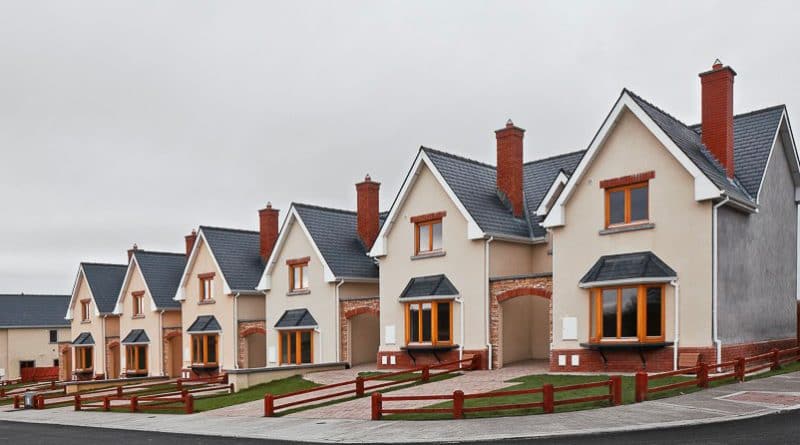Housing Completions on the Rise in Q1
Housing completions in the Republic of Ireland or should I say mainly Dublin and a few surrounding counties have increased by a fifth in the first quarter of 2019 according to the Goodbody BER housebuilding tracker. According to the figures 4,255 residential units were completed, 2,358 were in housing schemes with the balance being one off and apartments.
While this is positive with the figures showing a 22% year on year growth it is slower than Q1 2018 by 8%, this figure is not without its concerns as a weaker Q3 & Q4 in 2018 has led to some caution in the market. Topped off by the fact that we have one of the lowest housing outputs among our EU cousins, according to the most up to date data from Euroconstruct this amounts to 2.4 house completions per thousand of population compared to the EU average of 3.4 with many EU countries having much higher rates, making Ireland the fourth lowest of the 19 EU countries in the Euroconstruct data.
I believe the assumption that needs to be made here and needs to be considered by the powers that be is that housing in Ireland is still dysfunctional and there is no easy or short-term fix. If we consider the commentary and facts presented by the likes of David McWilliams, economist and Mel Reynolds, architect, over the past 2, 3 or 4 decades the normal laws of supply and demand do not apply to Irish property, the more property we deliver the more prices continue to rise, even in the boom period when we had an oversupply of property this was the case. Maybe the argument against that point is credit supply, when we do reach a point where supply equals demand prices might level off particularly if you take into account the restricted levels of credit available. Back to today and we find the average price of houses in Dublin is staggering at €424,830 up 4.6% year-on-year according to EY GeoView, the national average is €284,546 representing a year-on-year increase of 8.6%. In my own opinion, I believe the Government’s over-reliance on the private sector is causing further delays and increases in pricing, only when the Government truly decides to take the bull by the horns and intercede by becoming a developer in its own right will the availability of affordable and social housing reach sustainable numbers in the short to medium term.

Surety Bonds.
The over-reliance on the private sector is not the only area the Government has an overdependence, Dublin should be a focus for concern, according to figures from Dublin Chamber c. 1.2 million people live in Dublin City & County, c. 1.8 million people live in what is known as the Greater Dublin Area – a region comprising Dublin, Meath, Kildare and Wicklow, this figure is set to grow to c.2.2 million by 2031, the current figure equates to 39% (Greater Dublin Area) of our population and 42% of GDP which beggars belief when we have other cities that could take and would want a share of jobs and all that comes with it.
I wrote an article in April 2018 that pointed labour being one issue and increased cost of construction from other areas such as materials, financing, rising interest rates and utilities all culminating in overall escalation in pricing. The impact of these additional costs can already be seen, the cost of building a family home according to Linesight increased by 7.5% in 2018. Similar figures of 7% and upwards in the cost of construction in 2019 have been bandied around, whether they will hit those heights will remain to be seen.
While a lot of the blame for these increased costs can be pointed at Government policy and levels of inaction it is not the only sector which should be held accountable, all local county and city councils have to take a level of responsibility, across the island of Ireland communication within the councils is fragmented and is causing start and completion delays for developers.
Other issues are restrictive building heights, vexatious objectors to planning applications and local councillors ineptitude to planning. Karl Deeter of Irish Mortgage Brokers recently advised that in combination with vexatious objectors there are numerous politicians including councillors, TD’s and ministers whom have held up the development of c.10,000 residential units over the past number of years, all because they did not want to see such developments in their own back yard. Imagine the impact those 10,000 units would have on social, affordable, rental and first-time buyers if they had come to the market.
Time for the Housing Minister to act not only does he need to reign in local councillors, the planning laws need to be changed in order to take vexatious planning objectors out of the equation.
Colm McGrath is the Managing Director of Surety Bonds an independent bonding intermediary.
© The content of this site is subject to copyright laws and may not be reproduced in any form without the prior consent of the publishers. The views expressed in articles do not necessarily represent those of the publishers. This article first appeared in the ‘Leaders in Construction’ issue of Irish building magazine 2019.

